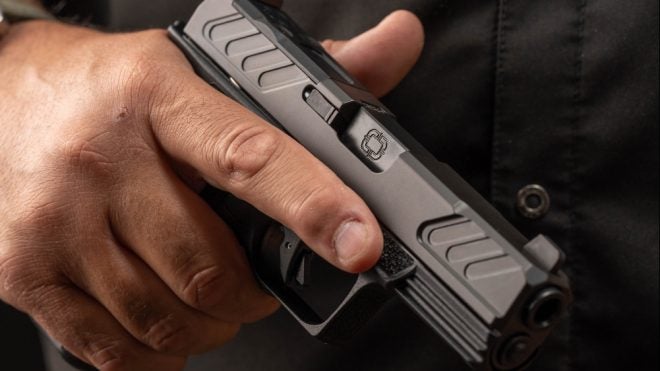The evolution of firearms, particularly pistols, has been a continuous journey of innovation, adaptation, and refinement. In recent years, the intersection of advanced features and sleek designs has not only redefined the capabilities of these weapons but has also significantly influenced user preferences, tactical operations, and competitive shooting landscapes. This transformation is propelled by the integration of cutting-edge technologies, ergonomic research, and aesthetic advancements, leading to pistols that are not just tools of defense but also marvels of engineering and design.
The Advent of Modular Design
One of the most significant trends in pistol innovation is the shift towards modularity. Modular pistols, exemplified by platforms like the SIG Sauer P320 series, offer the user the ability to easily interchange parts—be it grips, slide lengths, or caliber conversions—without the need for specialized tools or gunsmithing. This versatility allows for a personalized firearm that can adapt to various roles, from concealed carry to competitive shooting, with ease. The modular design not only caters to a wide range of user preferences but also simplifies maintenance and upgrades, embodying a future-proof approach to firearm ownership.
Enhanced Ergonomics and Usability
Ergonomics has taken center stage in the design of modern pistols. Designers now prioritize how a pistol feels in the hand, its balance, and the ease with which users can operate controls. The result is firearms that are more comfortable to hold, aim, and shoot, reducing fatigue and improving accuracy over extended periods of use. Advances in grip design, such as interchangeable backstraps and textured surfaces, ensure a secure and comfortable grip for a wide variety of hand sizes. Moreover, ambidextrous controls and improved slide and magazine releases cater to a broader range of users, including left-handed shooters and those with smaller hands.
Cutting-Edge Materials and Manufacturing Techniques
The use of advanced materials and manufacturing techniques has significantly contributed to the evolution of pistol designs. Polymer frames, for instance, have become a hallmark of modern firearms, offering a lightweight yet durable alternative to traditional metal frames. This innovation not only reduces the overall weight of the pistol, making it more comfortable to carry, but also provides resistance to corrosion and wear. Furthermore, the advent of precision machining and 3D printing technologies has allowed for tighter tolerances and more complex geometries, leading to improved reliability, accuracy, and aesthetic appeal.
Integration of Optics and Smart Features
The incorporation of optics and smart features represents a leap forward in pistol functionality and effectiveness. Red dot sights, once the domain of competitive shooters and military special forces, are now increasingly common on carry pistols, offering enhanced accuracy and faster target acquisition. Moreover, the integration of smart gun technology, including fingerprint sensors and RFID chips, promises to enhance safety and personalization, preventing unauthorized use and providing users with unprecedented control over their firearms.
Sleek Aesthetics Meeting Functionality
The evolution of pistol design is not confined to functional improvements; aesthetics play a crucial role in the appeal of modern firearms. Manufacturers are blending form and function to create pistols that are not only efficient but also visually striking. Customization options, such as cerakote finishes and laser engraving, allow owners to personalize their firearms, reflecting their style and identity. This marriage of sleek design and customization has transformed pistols into personal statements, transcending their traditional roles. An excellent example of this blend of aesthetics and functionality is the Shadow Systems MR920, a pistol that has garnered attention for its innovative features and elegant design.
The Future of Pistols
As we look towards the future, it’s clear that the evolution of pistols will continue to be driven by technological advancements, user feedback, and a relentless pursuit of perfection. Innovations in materials science could lead to even lighter and stronger firearms, while advances in electronics might introduce more sophisticated smart features. Moreover, the growing emphasis on user experience and customization will likely continue, making pistols more personal and adaptable than ever before.
The redefinition of pistols through advanced features and sleek designs is not just a testament to human ingenuity but also a reflection of the changing landscape of firearm ownership and use. As these tools become more versatile, safe, and personalized, they pave the way for a new era in which technology and design go hand in hand, offering users unparalleled capabilities and choices. The journey of the pistol, from a simple mechanical tool to a sophisticated piece of technology, is a fascinating story of evolution, marked by the continuous quest for improvement and innovation.

